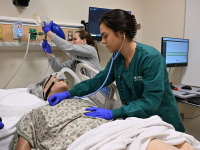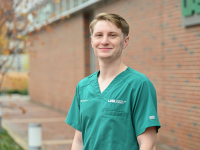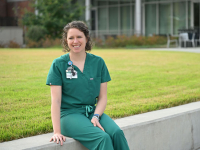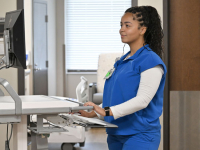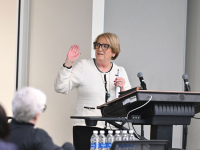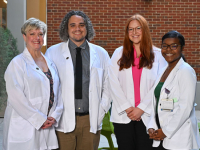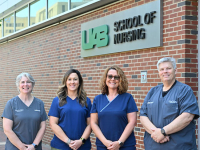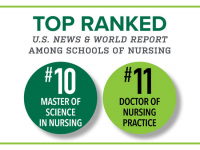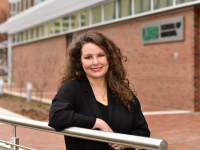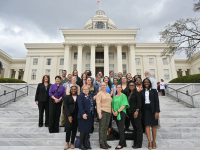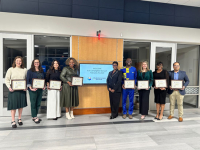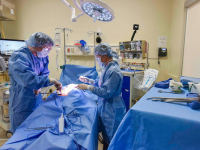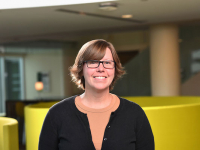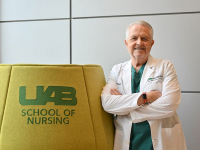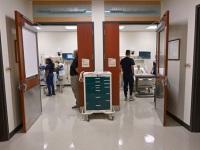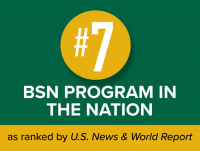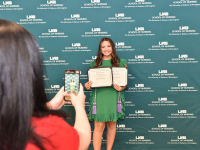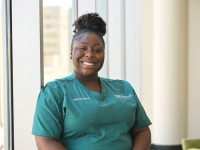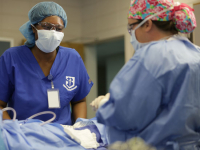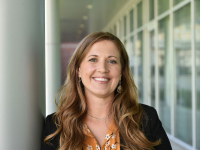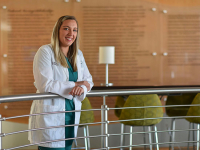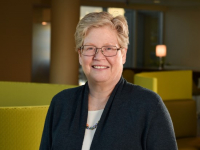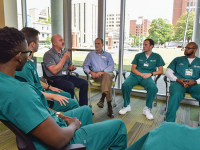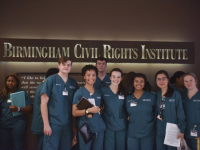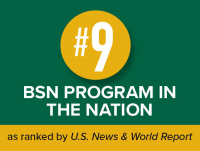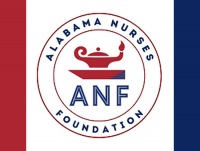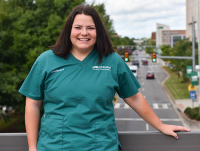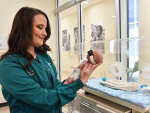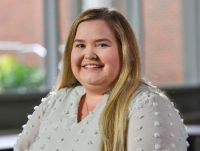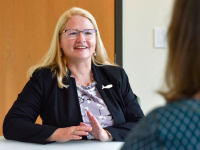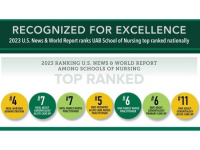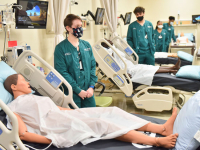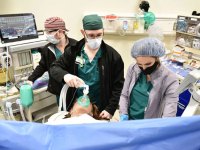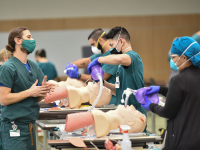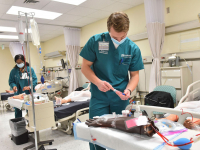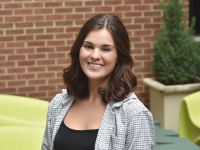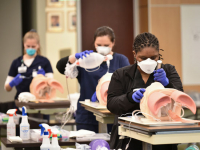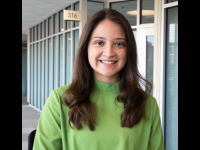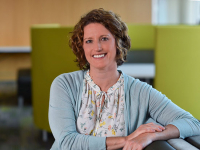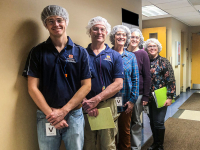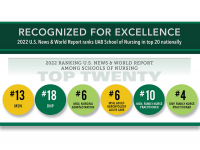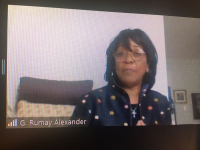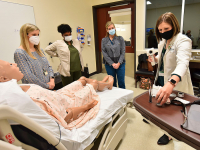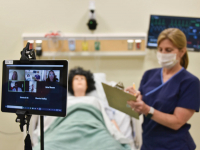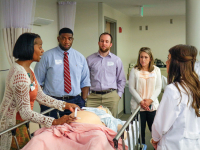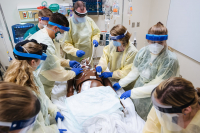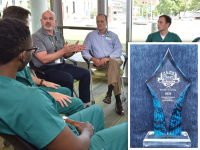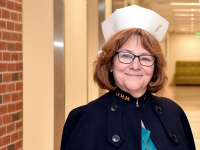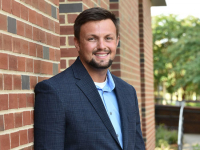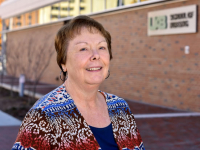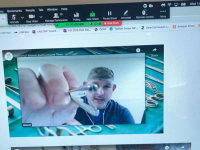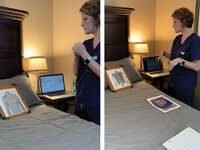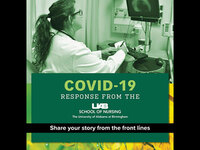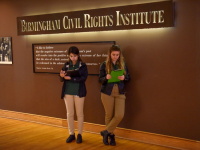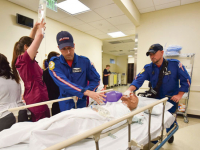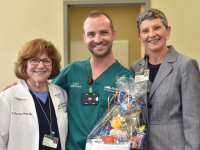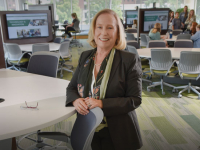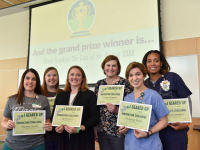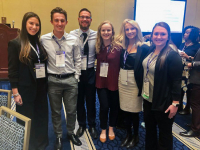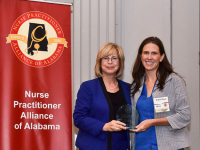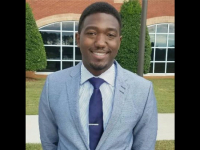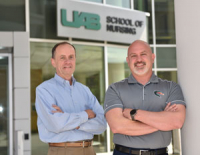 The hardships of poverty are a reality for many Americans, and many members of the Birmingham community, but it is impossible to grasp the strain of these conditions unless experienced them first-hand. The University of Alabama at Birmingham (UAB) School of Nursing and UAB Department of Social Work began partnering with Alabama Possible two years ago to offer students a hands-on experience simulating the trials and tribulations of poverty.
The hardships of poverty are a reality for many Americans, and many members of the Birmingham community, but it is impossible to grasp the strain of these conditions unless experienced them first-hand. The University of Alabama at Birmingham (UAB) School of Nursing and UAB Department of Social Work began partnering with Alabama Possible two years ago to offer students a hands-on experience simulating the trials and tribulations of poverty.Sixty-nine second semester Accelerated Master in Nursing Pathways (AMNP) students took part in the simulation on June 24 as a part of their coursework. In addition to completing a retrospective survey about their knowledge and attitudes about poverty prior to the simulation and afterwards, they write a page-long reflection after the simulation and incorporate their experience into bettering patient care. There will be five additional poverty simulations held in October and November, and five more in the spring, at UAB.
“The poverty simulation really opened my eyes to how difficult life is from week to week in poverty. It taught me that even those with high education can find themselves struggling to provide for their families,” said AMNP student Whitney Ray. “I think this experience will help me to be more compassionate and aware as a health care provider to the hundreds of thousands of people who face poverty in Alabama.”
During the simulation, students are placed into families who have as few as one member and as many as five. The families experience what it is like to live in poverty during a series of four 15-minute weeks. Family units receive good or bad news during the simulation that represents the uncertainties of real life. Possible scenarios include family illness, death, car trouble, or finding money. Participants have to travel to and from work with transportation passes, and pay rent and utilities, provide food and clothing and childcare for their family and attend school, all in a timely manner. If they fail to meet these demands, they may be evicted, have their utilities disconnected, or lose their jobs.
During the course of the simulations you see students running around frantically making comments like, I don't have enough money for that! or I'm going to lose my job!, Ray said. These statements speak volumes to the realism of the simulation, the student’s desire to succeed in their endeavors and the vicious cycle of misfortune that comes with living in poverty.
Alabama Possible has partnered with the UAB School of Nursing since the spring of 2014 on the simulation. More than 400 UAB students have participated in the simulations in the past 18 months.
Increased participation has made it necessary to train UAB faculty to facilitate their own simulations. Laurel Hitchcock, PhD, Assistant Professor in the UAB
 Department of Social Work in the College of Arts and Sciences, Laura Debiasi, DNP, MPH, CRNP, Instructor in the UAB School of Nursing, and Sallie Shipman, EdD, RN, CNL, Instructor in the UAB School of Nursing, received a grant from the UAB Center for Teaching and Learning to fund their training. Debiasi attended training this spring and Hitchcock and Shipman will be trained in the fall. This will enable the three faculty members to lead up to ten simulations a year with the help of faculty volunteers across campus.
Department of Social Work in the College of Arts and Sciences, Laura Debiasi, DNP, MPH, CRNP, Instructor in the UAB School of Nursing, and Sallie Shipman, EdD, RN, CNL, Instructor in the UAB School of Nursing, received a grant from the UAB Center for Teaching and Learning to fund their training. Debiasi attended training this spring and Hitchcock and Shipman will be trained in the fall. This will enable the three faculty members to lead up to ten simulations a year with the help of faculty volunteers across campus.The UAB Office of Interprofessional Simulation, an important sponsor of the event, helps by providing simulation kits, facilities and debriefing support. Within the next year the goal is to provide an interdisciplinary experience by including students in UAB School of Public Health, UAB School of Medicine and UAB School of Health Professions.
“The simulation helps students appreciate why a patient might not fill a prescription, is late for an appointment, seems in a rush to leave, or does not seek care until an illness has become serious,” said Debiasi. “These simulations are eye-opening to our students and volunteers. Each one is a slightly different experience, and I learn something new every time.”
The simulation has proven to sensitize students to the hardships their patients may be facing, and in turn enable them to deliver customized patient care through better understanding of patient backgrounds.

